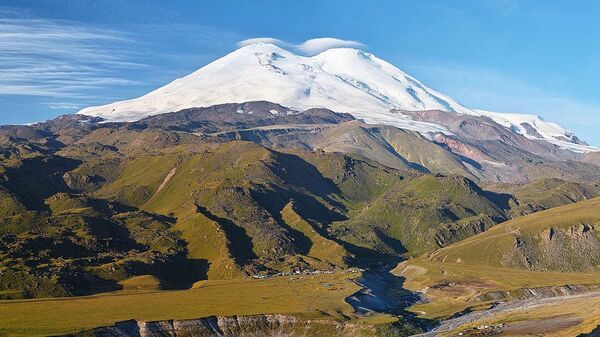The building in the north-western part of the Naryn-Kala fortress in Derbent is dated 300 years AD. But the 12-metres high building is almost entirely buried under the ground, leaving only a partially destroyed dome on the surface. But the building's purpose remains a mystery – whether it was a water reservoir or Christian or Zoroastrian temple. Scientists believe that if this is a Christian temple, it's one of the oldest of its kinds and could have been buried by Arabs in 700 AD after they conquered Derbent.
"If we decided to dig the temple, which had been used as a water reservoir for two centuries, we could destroy the cultural heritage site, guarded by UNESCO. That is why the scientist used muon beam analysis to study it, having placed detectors with nuclear-track emulsion inside the building 10 meters below the ground level. The study lasted since May up to September 2018 and its first results confirmed the effectiveness of the analysis method in case of this specific object", the scientist group's statement said.
According to researchers, several historic records from 17 and 18's centuries mention the building as an underground water reservoir. However, the analysis, conducted by the NUST MISiS scientists gave grounds for scepticism in regards to this theory. The main feature, which allowed characterising the building as a temple, was its form of cross, typical for ancient churches and temples, as well as the fact that it was built in accordance with cardinal directions.
"It seems weird to believe that this building was a water reservoir. Naryn-Kala fortress has a similar underground building 10 metres deep and it is indeed a reservoir. It is a simple right-angled building. The unusual construction, which we analysed, has a shape of a cross, directed on cardinal directions, with one of its sides being 2 metres bigger than others. Archaeologists, which started the digging of the site, said that initially the building was built on the surface and that it stands on the highest point of Naryn-Kala. Why would anyone build a reservoir on the surface and on the top of the highest mountain? That's weird. There are way more questions than answers here", head of NUST MISiS scientists' group, Natalia Polukhina, said.
The nuclear-track detectors, developed by the Polukhina's scientific group in NUST MISiS, allow not only to detect the muon particles but also to determine their paths with high precision. By analysing the detectors' readings, one can reconstruct 3D models of various objects, ranging from metre-large empty spaces in the ground to caves in a mountain.
The scientists studied the Naryn-Kala fortress along with the colleagues from Lebedev Physical Institute, Skobeltsyn Institute of Nuclear Physics at Lomonosov State University and Dagestan State University.

